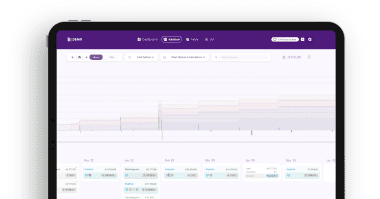While the term “open banking” might not be familiar to the everyday consumer, the concept has already been employed by financial service providers, and its adoption is increasingly gaining steam. Open banking refers to application programming interfaces (APIs) whereby financial data is aggregated. In other words, innovators and startups are providing APIs that allow access to consumer banking and transaction information in a one-stop venue. As a result, these third-party providers are forcing legacy banking entities to innovate and adapt to the current landscape.
The basics of open banking
Banks are adjusting to the situation by partnering up with API service providers. These partnerships will enable third-party innovators to gain access to the banks’ tremendous customer databases. However, the practice will require customers to agree with the data sharing, usually by checking the terms-of-services box. The API will then have entry to customers’ accounts and transaction history across different financial institutions.
Open banking benefits
Though the advancement of open banking might seem like an intrusion of personal privacy, it holds the promise to offer a more convenient and low-cost banking experience for users. API providers have the key to the bank’s system gateway, allowing consumers to view multiple bank accounts within a single app or website. This removes the irritating process of switching between different banking apps. As well, as APIs analyze customers’ spending habits, they can recommend appropriate financial products or services, such as savings products like certificate of deposits (CDs) or high-yield savings accounts.
The advantages of API are more noticeable in a lender-and-borrower relationship. From a lender’s perspective, instead of going through a client’s financial data from various accounts, they can have aggregated data through API platforms. This, in turn, makes it less onerous for lenders to assess the loan risk level and help them set interest rates accordingly. On the other hand, customers can quickly and conveniently receive all the offers for loan originators, drawing a better picture that allows customers to see all their available options.
Open banking and enterprise users
Not just the everyday consumer, API technologies are creating a more innovative environment for enterprises. In fact, open banking is assisting business users in resolving some of the pain points related to treasury processes and controls. As API facilitates a more integrated system, information can be effortlessly moved between systems in real-time. For example, enterprises can execute invoice approval, real-time payments, and vendor preferences in reduced steps and procedures. This kind of interface will enhance the experience as well as the relationship between the transactional partners. Additionally, businesses can incorporate API into an Enterprise Resource Planning (ERP) system or Treasury Management System (TMS), according to an article by JP Morgan.
All in all, open banking is revolutionizing the banking industry, and its adoption is gaining momentum. While it may seem intrusive to some, the benefits of open banking, such as convenience, lower costs, and better access to financial products and services, make it an attractive option for many consumers and businesses. As more financial institutions partner with API service providers, we can expect to see even more innovation and development in the banking industry in the coming future.

